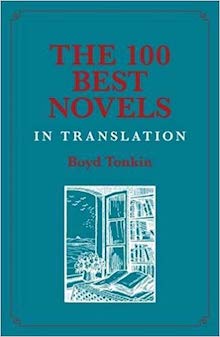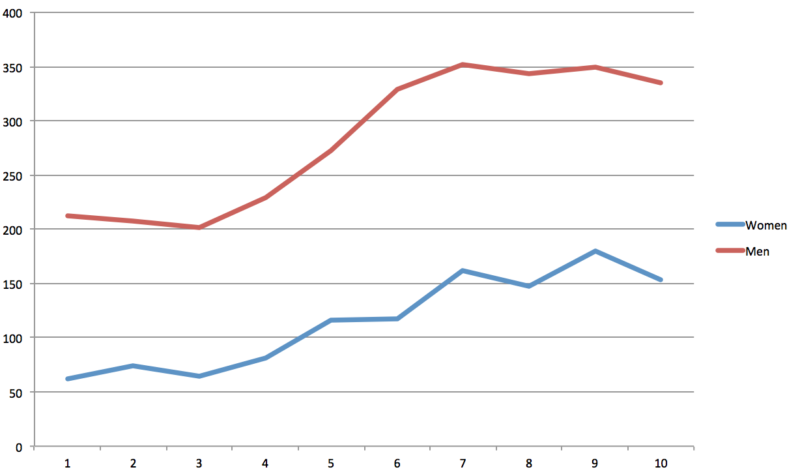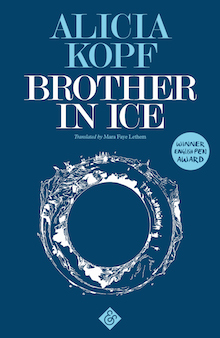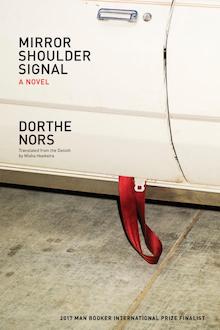Selection Bias, Best Translations, and Where Are the Women in Translation From?
A couple weeks ago, Boyd Tonkin, the excellent critic and founder of the Independent Foreign Fiction Prize–the inspiration for the Best Translated Book Award, and now the Man Booker International–released a rather unattractive looking book called The 100 Best Novels in Translation.

It’s pretty obvious what’s behind that cover, but for the sake of what comes below, here’s a relevant excerpt from the jacket copy:
“He has made an extraordinary selection of classics ranging from the well known authors such as Proust, Dostoyesky [sic], Sartre, Cervantes, Nabokov, Marquez, Kundera etc, to name just a handful, to lesser known, but no less deserving, authors writing in languages from every corner of the earth. For each selection he has written a commentary on the plot and theme of the work concerned, as well as writing about the merits of the particular translation(s) into the English language. The works are arranged in date order of publication, and are not ranked in any other way.”
Before going on, I want to make it clear that I have yet to see a copy of this book. (I highly doubt that Three Percent is on Galileo Publishers’ media list.) But I have seen some of the criticisms on Twitter and elsewhere, which I want to address below.
One more detour first: This book is structurally similar to a book proposal Marleen Seegers of the 2Seas Agency repped on the behalf of Stephen Sparks and myself a few years ago. We were also going to write about the “100 best translations,” except we were going to confine ourselves to books published since the year 2000, so that we could update this list every decade, and avoid having to write about all the classics (mostly male books canonized by men) once again, and organize everything by country. Similar to the description above, our proposal–and the sample pages we sent along–was to cover each book’s plot and major themes, while also trying to address it’s publishing history and cultural/personal importance.
Unfortunately–for us, anyway–no one was interested. Instead of jumping at the chance of a learned survey of the best translations of the twenty-first century–which, again, could be updated every decade, making it evergreen–we got some wickedly harsh rejections. Rejections that–because as much as I might posture, I’m pretty thin-skinned–still sting today. We were told that it would be better as a podcast. (Steal this idea and I will come for you.) That this sort of book is pointless when you can just find the same information at places like BuzzFeed for free. (Not kidding, and yes, this fuels my distaste for certain websites.) One editor read the proposal twice, because it was so forgettable that they forgot they had already planned on rejecting it. (I was dumb enough at the time–probably still am–to think the Three Percent/Open Letter platform would be enough for some publisher to throw us a bone, but alas.) That experience did not endear me to the publishing industry as an industry.
Although, I do want to point out that Sparks might be on the level of Boyd (emphasis on might), but I’m definitely not. So I’m willing to bet the bank The 100 Best Novels in Translation is much better written than anything we would’ve generated. (Except in so far as ours probably would’ve had more off-color jokes.)
There were two major interrelated issues that would’ve arisen as we worked on this though–one logistical, one aesthetic: 1) How would we know what books we’re missing (you can’t read everything, so how do you know what you don’t know?), and 2) How well would we have been able to justify what was best?
No point in talking methodology about that failed project here, but I do want to point out the few criticisms I’ve seen of Boyd’s book–all of which he may well address in the text itself–which were ones we were afraid of as well.
Only the most popular translations. This is partially a result of the first problem stated above–we only have time to read so many books, and these tend to be the ones that got the traction/sales to come to our attention. So when picking the “best,” there’s a high probability that, through ignorance alone, you’ll pass over a number of absolute gems. (I believe one review praised Boyd for including a lot of unusual titles, so I don’t know how much water this Twitter criticism carries.)
Choosing only the most erudite titles. Sparks and I tried to do something along these lines for Publishers Weekly some years back. (Complete with beardless, fat Chad picture. Er, fatter, I suppose. Still need to lose 12 pounds of pregnancy weight.) I believe Tom Roberge shit on this list with his typical sort of terse dagger: “It’s like record shop employees telling you what’s cool.”
Not enough diversity. Biggest criticism I’ve seen, and one that will inevitably stick. I’ve seen complaints about the number of translations by women (I believe the count is 14, which is really low), and that Arabic literature is totally overlooked. I’ll go out on a limb and guess that the Asian component is probably pretty standard (Tanizaki, Abe, etc.), and that India and Africa only have a couple entries each. Again, I might be wrong, so don’t hold me to this. But if I were asked to review this book, you can bet that I would be counting those titles and writing a couple paragraphs about underrepresented regions of the world–just like most everyone else. (Lies! I would avoid reviewing the book at all and would instead just write about shitty covers.)
Mostly old, established titles, which today’s readers don’t relate to. This gets to the point that actually inspired this post: It’s much easier to declare something from the 1950s that we’re talking about today as one of the “best” books, but a lot harder to take something from 2010 and put it on a list with Dostoyevsky. Evaluating contemporary titles feeds into two different selection biases: to favor the established over the new, and to assume that the best-selling titles will be the ones to last into the future.
Given how much people read, do we really need 100 titles? What about like the 5 or 6 best? Well, at least Boyd didn’t pull a James Mustich and write 1000 Books to Read Before You Die: A Life-Changing List. (Or Peter Boxhall, who, literally, one-upped him with 1001 Books You Must Read Before You Die.) Although, given the state of translations into English, you wouldn’t have to worry about leaving anything out . . .
*
If you put together a couple of the pitfalls listed above–especially the favoritism given to older titles and the problematic nature of judging the long-term value of contemporary work–and apply them to groups that are vastly underrepresented in translation (Africa, Middle East, Asia, all women writers), then you’re going to have some issues.
We don’t have reliable historical data on what’s been published in translation over the past hundred years (or even the past twenty, which is sad), but here’s a list of the number of fiction titles by women who have been published in translation since the inception of the Translation Database, with the number of fiction works by men in parentheses:
2008: 62 (213)
2009: 74 (208)
2010: 65 (201)
2011: 81 (229)
2012: 116 (273)
2013: 117 (329)
2014: 162 (352)
2015: 147 (344)
2016: 180 (350)
2017: 153 (335)
To put this in the simplest terms possible, 2.44 works of fiction by men are translated into English for every one written by a woman.
I’m not going to go all charts and graphs this post (promise!), but if you look at this chart and project back in time, it seems pretty obvious that there probably aren’t a lot of novels by women in translation from the first half of the twentieth century that Boyd (or anyone else) could be choosing for their “best of” list.

Although there are some really great female authors in translation who are considered classics (Marguerite Duras and Elsa Morante are the first two who come to mind), if you were putting together a top 100 list, you’d probably end up including a lot of contemporary writers. (Even Mercè Rodoreda wasn’t translated into English until the 1980s.)
Which leads me to another interesting question, and one final (promise!) chart.

This is the list of the countries with the most women in translation since 2008. If I had asked you to guess five countries with the most women in translation, how many of these–Germany, France, Sweden, Spain, and Japan–would you have gotten? France and Germany are always the most translated countries, so those seem like givens, but Spain is somewhat surprising (why no love for the Latin American women? although to be fair Mexico and Argentina are on this list) and Sweden and Japan seem almost unexpected.
Let’s dig one step deeper into this before actually talking about recent translations. (If I keep up with these nonsense digressive posts, you’ll all start doubting that I actually read books. Which, maybe I don’t! It’s just all baseball, pilates, and dumb graphs.)
Here are the five most translated female Swedish authors:
Helene Tursten (11)
Camilla Läckberg (6)
Liza Marklund (5)
Kristina Ohlsson (5)
Mari Jungstedt (4)
Viveca Sten (4)
Theresa Bohman (3)
I like to think of myself as a pretty well-read dude, who has at least a passing familiarity with almost any translation subgroup that you can name, but I know basically nothing about any of these writers. Läckberg is familiar and maybe Tursten? At gunpoint, I’d guess that they’re all crime writers, but, I haven’t read them and own none of their books, so . . . (Instant Update: Looks like Theresa Bohman isn’t a crime writer, but the others all are.)
How many female crime writers would make a list of the 100 Best Novels in Translation?
And although the most translated Japanese female writers probably includes Banana Yoshimoto, Hiromi Kawakami, Yoko Ogawa, and Yoko Tawada, there’s still a lot of genre fiction in there.
So, as a list-maker, you have the non-genre specific, gigantic works of Dostoyevsky, Tolstoy, even Nabokov and Camus on one hand, and the mostly contemporary crime-fiction writing by women on the other. This is not a good mixture.
*

Brother in Ice by Alicia Kopf, translated from the Catalan by Mara Faye Lethem (And Other Stories)
Technically, Kopf is from one of the countries with the most women in translation, although don’t tell Catalonia that.
So far this year, I’ve read 20 books written by women. And of those 20, this has to be top 5. But would it make it on the all-time top 100 list?
What a Bill Simmons question to ask. Sorry. I’ll let myself out.
Brother in Ice is a fragmentary Künstlerroman of sorts about a woman finding her way in the art world. This narration is buffeted by bits of personal essays and research about polar explorations, and a more diffuse motif connecting ice with her autistic brother. (Actually, it’s kind of surprising how little of her “brother in ice” there is in this book.) There are also a handful of pictures and diagrams that add to the “hybrid book” tag.
The polar exploration stuff didn’t really grab me, since that doesn’t really interest me personally, and I was hoping that these bits would exhibit more of the narrator’s hobby horse obsessive tendencies, rather than be mostly just a bunch of facts. Not that there aren’t some interesting things in there, I just didn’t find it as compelling as the “Research Notes” sections.
Epic I
Is it possible for an epic to not be imperialistic, athletic, or totalitarian?
Epic II
Isn’t there a territorial struggle in every family story? Domestic and emotional spaces as territories to be conquered.
Epic III
Sometimes I feel like Captain Ahab, pursuing my white whale. With me is E, who, like Ishmael, is spectator to an obsession he does not always understand.
What’s probably most interesting about this book is how it fits in nicely with other contemporary books by women, like Flights by Olga Tokarczuk. There are other examples that sort of fit into this type of writing (Empty Set by Verónica Gerber Bicecci and One of Us Is Sleeping by Josefine Klougart come to mind), but these two in particular mix obsessive, more fact-based fragments with ones that advance a plot that’s more thematic than page-turnery.
The appeal of this approach–which isn’t novel in the sense of “never having existed before,” but is trending–seems to perfectly match today’s culture. The brevity of each section is compelling–I felt like I was flying through this book–and the constant juxtaposition of various ideas and writing styles is comfortable in an “Internet surfing” sort of way. I’m not sure either of these books will be lauded as masterpieces twenty years from now, but they seem to resonate with today’s readers.
An interesting challenge to using this particular approach is to create enough of a narrative engine to keep people reading to the end. Flights starts off with a mysterious disappearance, which really hooks you for the first 100+ pages, but it loses a lot of steam (for me at least), when that doesn’t resurface till the very end. Without a more active driving force, the meandering prose is a bit rote and disconnected in a way that doesn’t seem to add a whole lot.
Brother in Ice has a similar problem–what even is the driving action of this book?–but because it’s much, much shorter, the thematic shifts, which are, at times, glacial (sorry!), stand out a lot more clearly and support the primary drive of the narrative itself. If any of that makes sense.
Related to the last post about Wait, Blink (I just realized that I’m on a run of reading books by women: Wait, Blink, then Brother in Ice and Mirror, Shoulder, Signal, and Comemadre and Poso Wells up next), there are some interesting pop-culture references in this novel. Candy Crush, Facebook (which will never not weird me out), Death Cab for Cutie, and Arcade Fire. This book is very 2010.
The weirdest reference for me though was this:
I don’t want to spend the week alone and shuttered up in the house; I download an application and after a couple of days of chatting, I meet up with some guy, B, at the bar where my neighbor F is DJing.
It took me far too many seconds to remember that “apps” were “applications.”
*
I’ve asked it before, I’ll ask it again: Why are so many of these translations so sombre and serious? By contrast, I’ve been rereading At Swim-Two-Birds by Flann O’Brien in preparation for my upcoming Ireland trip (expect some really short posts the next few weeks that are mostly just pictures and whiskey) and laughing out loud, constantly. I refuse to derail this post with a bunch of praise for a book by a man, but totally worth reading (or rereading). It’s fun to read books that are fun to read.
*

Mirror, Shoulder, Signal by Dorthe Nors, translated from the Danish by Misha Hoekstra (Graywolf Press)
Is it OK to just write “not spectacular!” and call it a review?
Speaking of reviews, I’ve read a couple interviews with younger reviewers this week, and shit is there a lot of anxiety out there about literary criticism and what it is and isn’t. Chill the fuck out, y’all, and just write entertaining pieces about books. Or, what’s probably better, is to write a list and then do a follow-up post that’s a collection of the most fire Tweets in response to said list. Recipe for Internet success! (Also, everyone should read this. No, seriously, click that. It’s about infiltrating a clickbait factory and writing a fake article–which I saw and groaned over–that went viral.)
I bought the new Nors book after finding this one-star review on Amazon:
reader in Newport RI
There is nothing that made me care about any of the excruciatingly dull characters. I found the writing unremarkableJune 14, 2018
Uninteresting
That’s my second-favorite one-star review of recent times.
Initially, I thought, “I’m a neurotic middle-aged person who is excruciatingly dull! This is the book for me!” Then I started reading it, and there really is a lot of shit about taking driving lessons–driving lessons in which the teacher runs the gearshift (shift stick? I don’t understand cars) while the student handles the clutch? Which seems criminally dangerous.
There are probably layers to this book, and I’m sure some people respond to this style, but I found it all a bit tedious and flat. But it’s about a translator, so it has that going for it! Translators lead fascinating lives. (That sounds like a joke, because it is one, but many of my favorite people are translators, and all your lives are incredibly interesting.)
Sonja is sitting in a car, and she’s brought her dictionary along. It’s heavy, and sits in the bag on the backseat. She’s halfway through her translation of Gösta Svensson’s latest crime novel, and the quality was already dipping with the previous one. Now’s the time I can afford it, she thought, and so she looked for driving schools online and signed up with Folke in Frederiksberg. The theory classroom was small and blue and reeked of stale smoke and locker rooms, but the theory itself went well.
Nope. Not for me. “Already dipping with the previous one” is so clunky there, and “the theory classroom” is a nice practical dive into translationese.
Not to say that there aren’t some nice moments in the book, but you know, if you’re only going to read 100 translations and you want them to be the best, you can probably let this one pass by.

Re: “Why no love for the Latin American women?”
The answer is mathematics. This is a chart based on country of origin. Yes, there are loads of Latin American women authors who are great, but they’re spread around more than a dozen South & Central American countries, so no one Latin American country ranks very highly.
If you did another graph based just by language, Spanish would almost certainly outrank Swedish (a no-brainer, since Sweden has just a little more than 20 books more than Spain. But Spanish might also get surprisingly close to French.